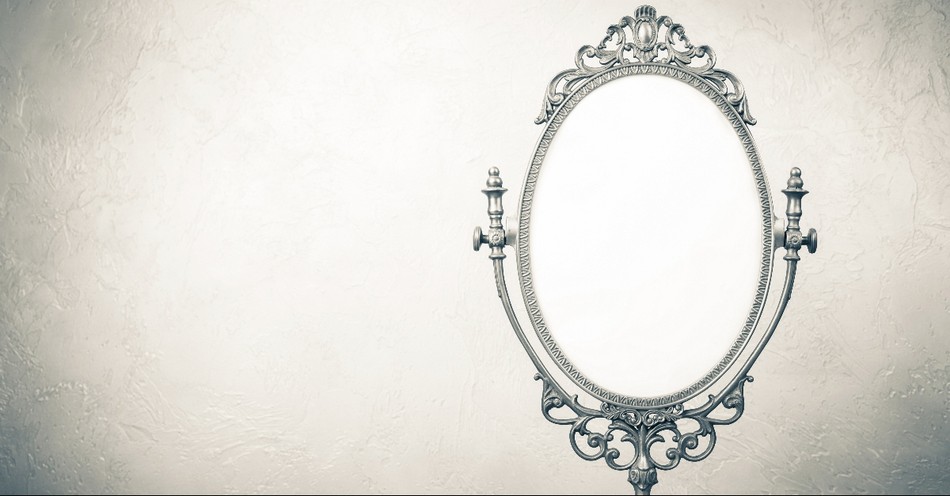The phrase image of God, often referred to (from the Latin) as imago Dei, comes from the very first book of the Bible.
In Genesis 1:26, after creating the whole world from nothing, God turns his attention to something extraordinary: “‘Let us make human beings in our image, to be like us,’ God declares. ‘They will reign over the fish in the sea, the birds in the sky, the livestock, all the wild animals on the earth, and the small animals that scurry along the ground’” (NLT).
In the ancient Near East, where the literature and stories of Genesis were born, many people believed that images contained the substance of whatever or whoever they represented.
And in some instances, kings and rulers would station statues or icons of themselves in certain places or territories, as a way of declaring their presence (their control and rule) there. In those cases, it was not so much the physical likeness of the image that mattered, though that was certainly part of its value.
The image’s essence was key. These statues or icons were thought to contain the very soul and authority of whoever they represented. In other words, statues and icons served not just as placeholders but as actual, embodied delegates.
Where Is ‘Image’ First Used in the Bible?
Therefore, when we come across the word image in Genesis 1:26 (“Let us make human beings in our image, to be like us”), we get a glimpse of what God is up to.
What we discover is this astounding piece of information: God, who stands wholly opposed to any graven images or false idols (Exodus 20:4-6) — God, who for all intents and purposes is an iconoclast God — allows himself to be represented by living, breathing images: the humanity he created.
The infinite God chose to make for himself embodied agents in finite, physical, and imperfect human beings. Because of our being created as the imago, humanity has special dignity and destiny. Unique from everything else that exists, we reflect God to the world around us — again, not as symbols, but as an actual, personified agents of God’s Kingdom.
Whenever we (the church) tend to talk about, debate, or consider what it means that humans are made in the image of God, we have mostly focused on God’s characteristics or attributes.
While some of God’s characteristics are simply and wholly his — his omniscience, omnipresence, self-existence, and eternality, we might think of a list like the one that follows when discussing the concept of imago Dei:
1. We are like God in that we rule creation.
2. We are like God in our creativity.
3. We are like God in our relationships.
4. We are like God in that we are unlike animals.
5. We are like God in our mercy.
6. We are like God in our love.
7. We are like God in our holiness.
8. We are like God in our justice.
Those are ways we have attempted to describe how humanity, as the imago Dei, look and act like God. While those attributes might be accurate, Genesis offers a clue to help us better answer this question:
What Does it Mean That Humans Have Been Made in the Image and Likeness of God?
As a way to further unpack the concept of the imago Dei, allow me to break down the image of God into four categories: we bear God’s image substantively, functionally, relationally, and communally.
We have been created substantively in God’s image. Early theologians like Irenaeus and Aquinas have long believed that something about our substance or structure is like God’s substance or structure. In other words, humanity has some capacity that makes us image-bearers of God.
The unfortunate downside of the substance view is, that if someone is differently abled or not rational, they have been wrongly seen as less of a human being.
But because we are many parts of one body (Romans 12:5), we all belong to each other, and we all bring something to the imago “table.” So, when understood rightly, it is actually a remarkable thing — something about our substance resembles God.
We have been created functionally in God’s image. The image of God is also something we do as a function, as we rule over created order. We are little viceroys, little kings and queens, and the way we govern creation is a way we image God.
The downside of the functional view is that in our sin, we have twisted “dominion” to mean doing whatever we want to whoever we want, taking advantage of positions of power, and destroying the earth.
But the redemptive side of the functional view is that it highlights that we all have a purpose in God’s Kingdom.
We have been created in God’s image relationally. Because God’s nature is a relationship (Father, Son, Spirit), we are also meant to image God as we relate with others and also with God. Our relationships should reflect God’s love.
The downside of the relational view is that the evangelical church has tended to reduce this to only include romantic relationships or has idolized the biological family unit, resulting in pain to people outside of these categories. But we are all the imago because we reflect God through all kinds of wonderful, life-giving relationships.
We have been created in God’s image communally. While we as individuals, have been created uniquely and lovingly in God’s image.
The problem is that our sin has caused us to miss the whole picture. Genesis tells us, “In the image of God he created them” (Genesis 1:27). Let me repeat that with emphasis: In the image of God, he created them.
The point is, though individuals are indeed image bearers, the full image of God cannot be fully revealed through one person.
God has designed all of humanity together to reveal his incredible image and likeness. With all her exquisite diversity, humanity as a whole, as a collective, displays God’s image.
The Ultimate Imago
For Christians, “God created human beings in his image and likeness” is a foundational claim of our faith. But in any discussion on the imago Dei, we must acknowledge that though humanity, collectively, was always intended to reflect God’s image perfectly, our sin marred our image-bearing.
And yet, the good news of the gospel is that though sin has destroyed the way we bear God’s image and likeness, the first and final imago Dei is Jesus.
Jesus, as Colossians tells us, is the visible imago of the invisible God (Colossians 1:15). And because of Jesus’ perfect work on the cross and through his resurrection, in our union with Christ through the ministry of the indwelling Holy Spirit.
Being made in the image and likeness of God, therefore, is not simply a list of divine qualities —it is a journey of discovery about the goodness of God, our Maker, who humbled himself enough to take on the very likeness he gave us so that we could become one with him.
Through Jesus, our Savior, and brother, we have access to relational intimacy with the God of the universe, and as his image bearers, we have value beyond compare.
(The above is adapted from Aubrey Sampson’s Known: How Believing Who God Says You Are Changes Everything. NavPress: 2021)
Photo Credit: ©iStock/Getty Images Plus/BrAt_PiKaChU


_639003522088907085.jpg)

